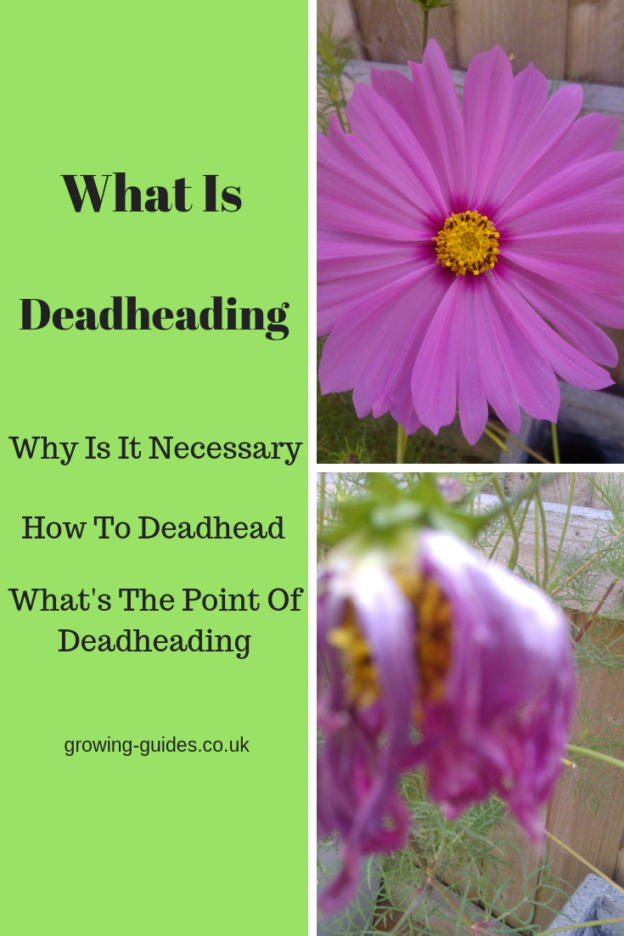In a few of my posts I have mentioned deadheading in passing, but what is deadheading? What is the point of deadheading? Is it necessary? These are just a few of the questions that I’ll answer in this post.
What Is Deadheading?
If you have ever nipped a dead flower head off a plant, either by hand or with secateurs or cutters, you have dead headed that plant. So in simple terms deadheading is removing dead flower heads from plants. Not to be confused with pruning which can be more about changing the shape of shrubs and bushes.
What Is The Point Of Deadheading?
There are 4 main reasons to deadhead plants
- To encourage the plant to produce more flowers.
- Give the plant the chance to grow stronger roots.
- Keep the plant looking tidy.
- Cut down on the self seeding of plants in places where they are not necessarily required.
1. The reason plants produce flowers is to reproduce. They attract insects by producing nectar that insects need to feed on. The flowers also produce pollen and the insects transfer the pollen from flower to flower as they partake of the nectar.
Once the flower has been pollinated it dies, producing seed to spread and create future plants. This is the wonder of nature. By deadheading you make the plant produce more flowers.
It is possible to keep an annual plant flowering from the end of May through to the first frosts by deadheading regularly. Obviously if the plant is a fruit or vegetable, leave the flowers alone as you need them to pollinate to produce the crop.
2. When you first plant a shrub or even a tree, if it has flowers already take them all off. Then once planted the shrub will develop a good, strong rooting system before producing any flowers. A plant will concentrate on either growing or reproducing, so by depriving it of flowers it will establish strong roots.
3. This is self explanatory, plants look tidier if the flowers aren’t dead or dying.
4. Anyone who’s grown poached egg plants for instance will be familiar with just how quickly seeds set and spread. That’s fine if you want to fill a particular area with flowers but if you are trying to keep order on your plot then you don’t want random plants. The saying “one years seeds is seven years weeds” is not wrong.
There is also evidence that leaving dead flowers or leaves on plants can lead to diseases and viral infections and attract the attention of unwanted pests.
So by nipping those deadheads off before they can set seed can save you a whole load of work at a later date.
How To Deadhead

To deadhead a flower correctly, cut the stem below the flower head just above a full set of full healthy leaves. Do this with each dead flower head and your plant will produce many more flowers and give a much longer showing throughout the season.
To deadhead woody plants like lavender cut them back by about two thirds in late August. This saves them from becoming too woody, and will ensure plenty of new blooms next season.
How To Identify Which Flowers To Deadhead
It is usually quite simple to tell the difference between flower buds and dead flower heads. Below are a few pictures of some Cosmos flowers in various stages of life/death.
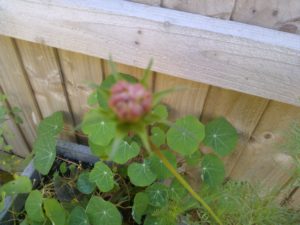
Flower bud
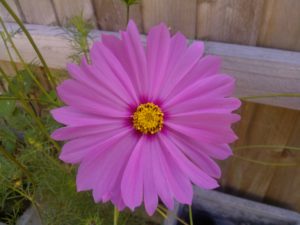
cosmos flower
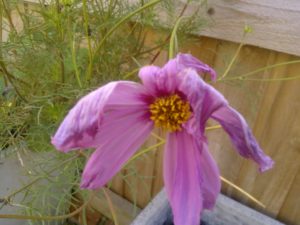
Flower dying
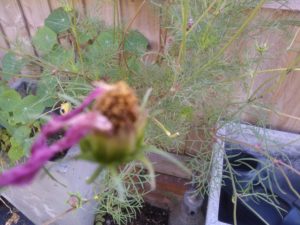
Deadhead
Is Deadheading Necessary?
In most cases yes, it is necessary to deadhead regularly however there are quite a few varieties of flower that don’t need to be deadheaded. These include:-
- Certain types of Pelargoniums (Geraniums)
- Some Salvias
- Nemesia
- Begonias
- Euphorbias
- Fuchsias
There are many more annuals that don’t need deadheading above are just a few examples.
No need to deadhead?
Should I be deadheading everything? Thankfully, no;
Some obliging plants do not need deadheading. Typically fuchsias, bedding lobelia and salvias either don’t set much seed or neatly deadhead themselves
Do not remove the faded flowers on plants that produce seed loved by birds, including Rudbeckia, cornflower and sunflower
There is no need to deadhead rose cultivars that bear hips or other plants that bear berries in the autumn
Leave plants that have ornamental seeds or fruits without deadheading; examples include alliums; love-in-a-mist (Nigella), stinking iris (Iris foetidissima) and bladder cherry (Physalis alkekengi)
It really doesn’t take long to deadhead and it makes your plants look better. It also keeps them flowering longer and keeps them healthier. So it’s one gardening activity that you really should get into the habit of doing.
One word of caution, if you’re out visiting someone else’s garden and you’re tempted to remove a few deadheads be warned. They don’t always take too kindly to strangers plucking their flowers, not even dead ones. 🙂

